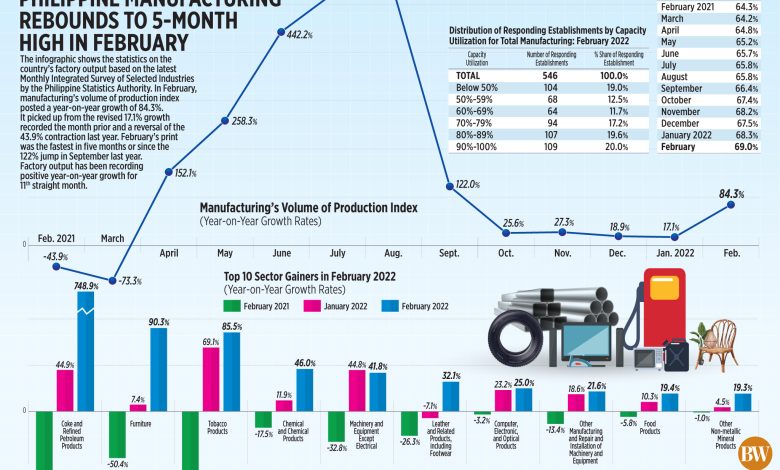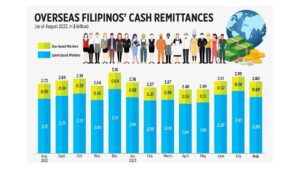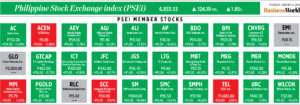Manufacturing bounces back as restrictions ease

By Mariedel Irish U. Catilogo
MANUFACTURING rose to its highest level in five months in February, thanks to favorable base effect and increased economic activity amid looser mobility curbs.
Factory output, as measured by volume of production index (VoPI), jumped by 84.3% year on year in February from the revised 17.1% in January, preliminary data from the Philippine Statistics Authority’s (PSA) Monthly Integrated Survey of Selected Industries showed.
This was a turnaround from the 43.9% decline recorded in February last year. It was also the highest year-on-year growth in five months or since the 122% surge in September last year.
February marked the 11th straight month that the manufacturing output was in positive territory.
In comparison, the Philippines’ manufacturing Purchasing Managers Index (PMI) reached a 3-year high in February with a 52.8 reading, from 50 in January. This was the highest PMI reading since the 53.2 reading posted in December 2018.
“The February data continues to benefit from base effects,” ING Bank Senior Economist Nicholas Antonio T. Mapa said in an e-mail. “We can expect another month of gains for March but base effects wash out after that.”
Federation of Philippine Industries Chairman Jesus L. Arranza attributed the strong factory growth due to the further reopening of the economy, which meant increased output and more work opportunities.
“Remember that as we open the economy, manufacturing requires workers to report to work,” he said in a phone call. “But there will be a slowdown especially for coke and refined petroleum as people are conscious of prices.”
In February, Metro Manila and other areas were under a more relaxed Alert Level 2, coming from a month-long Alert Level 3 in January amid an Omicron-driven surge in new coronavirus disease 2019 (COVID-19) infections.
The PSA noted an expansion in the VoPI in the 19 out of 22 industry divisions in February, led by manufacture of coke and refined petroleum products which soared by 748.9% from 44.9% in January. This was followed by strong growth in the manufacture of furniture (90.3% from 7.4%) and manufacture of tobacco products (85.5% from 69.9%).
Meanwhile, contractions were seen for the manufacture of electrical equipment (-28.8% from -26.8%), followed by wearing apparel (-5.1% from -31.8%) and rubber and plastic products (-1.7% from -1.6%).
The capacity utilization — the extent to which industry resources are used in producing goods — averaged 69.0% in February, slightly higher than 68.3% in the previous month. Twenty-one out of 22 industry divisions reported capacity utilization rates of more than 50%.
Mr. Arranza expects the local manufacturing industry to grow moderately as the purchasing power of the people will increase in accordance with the election season.
“From April onwards we can expect growth but more likely at a more moderate pace as the economy gradually reopens after months of lockdowns,” Mr. Mapa said.
The national elections will be held on May 9.




